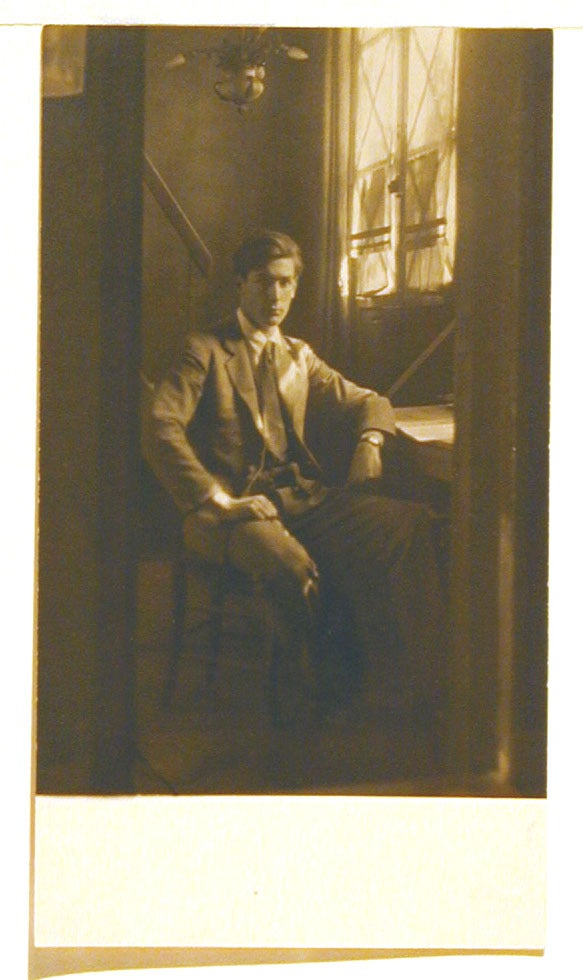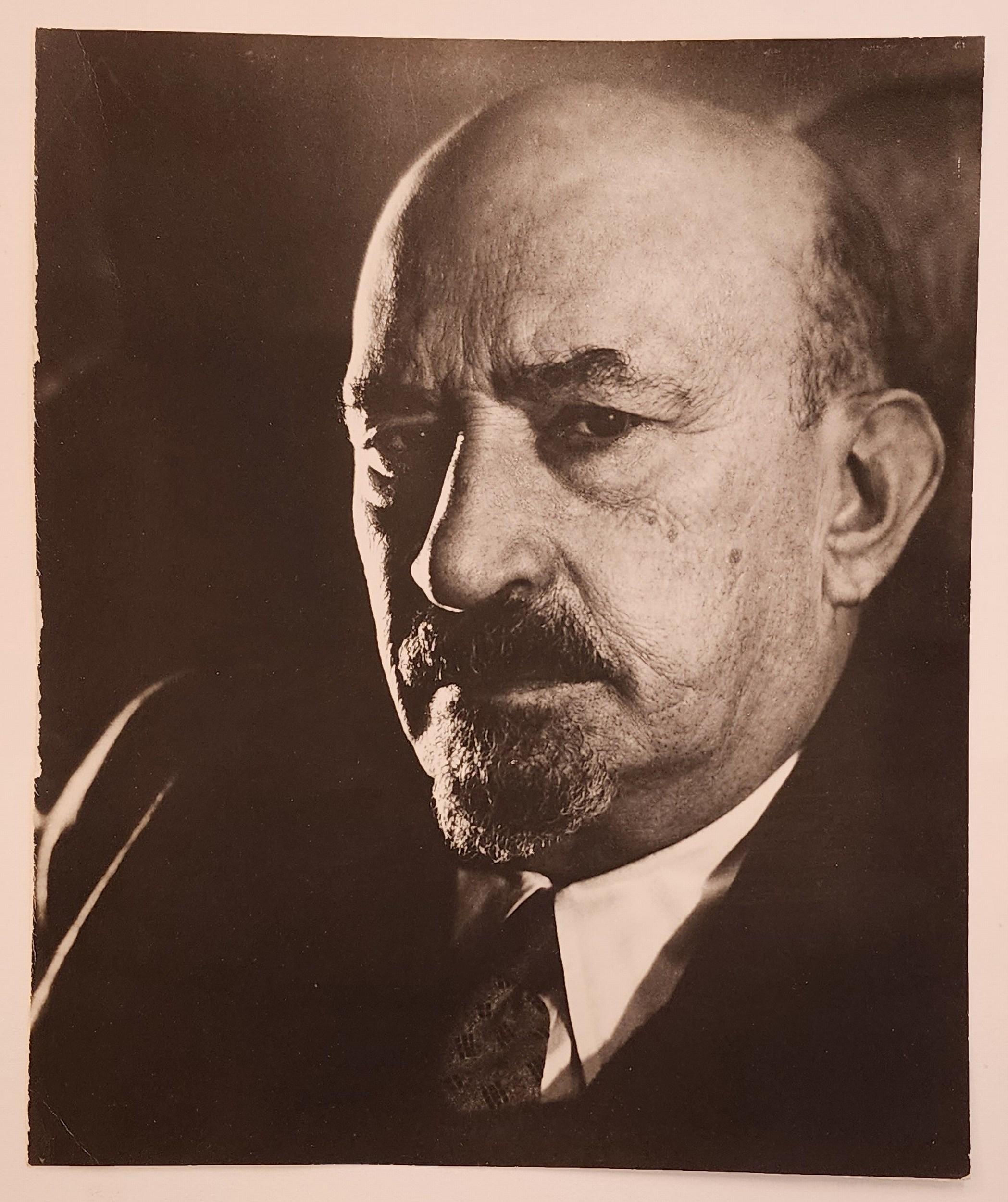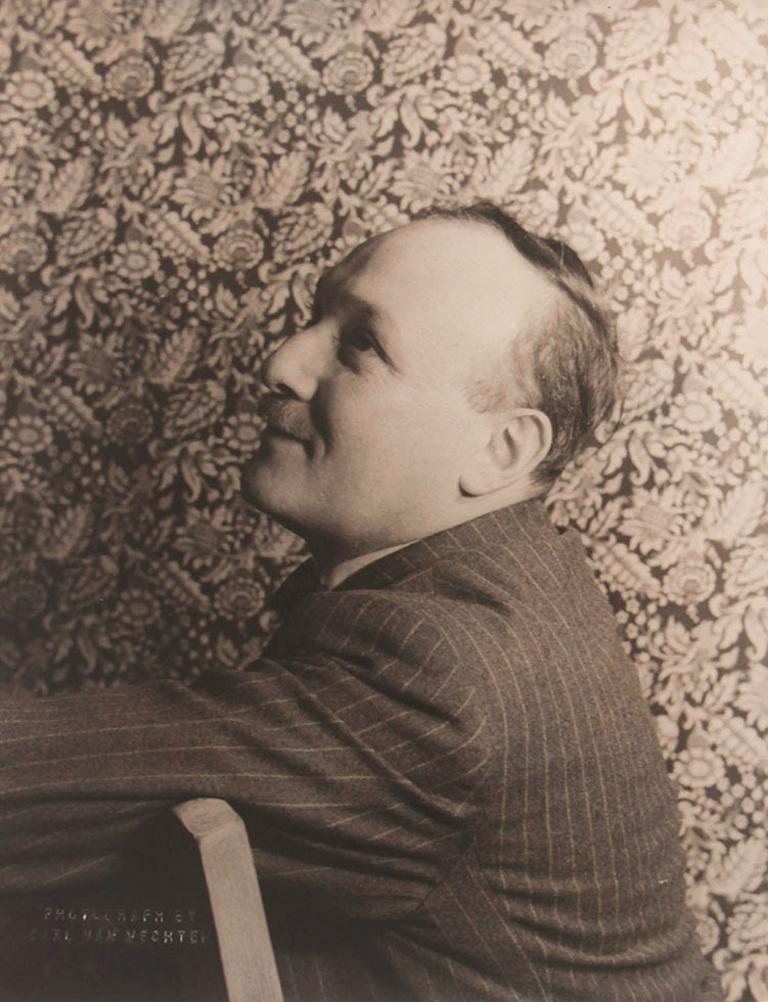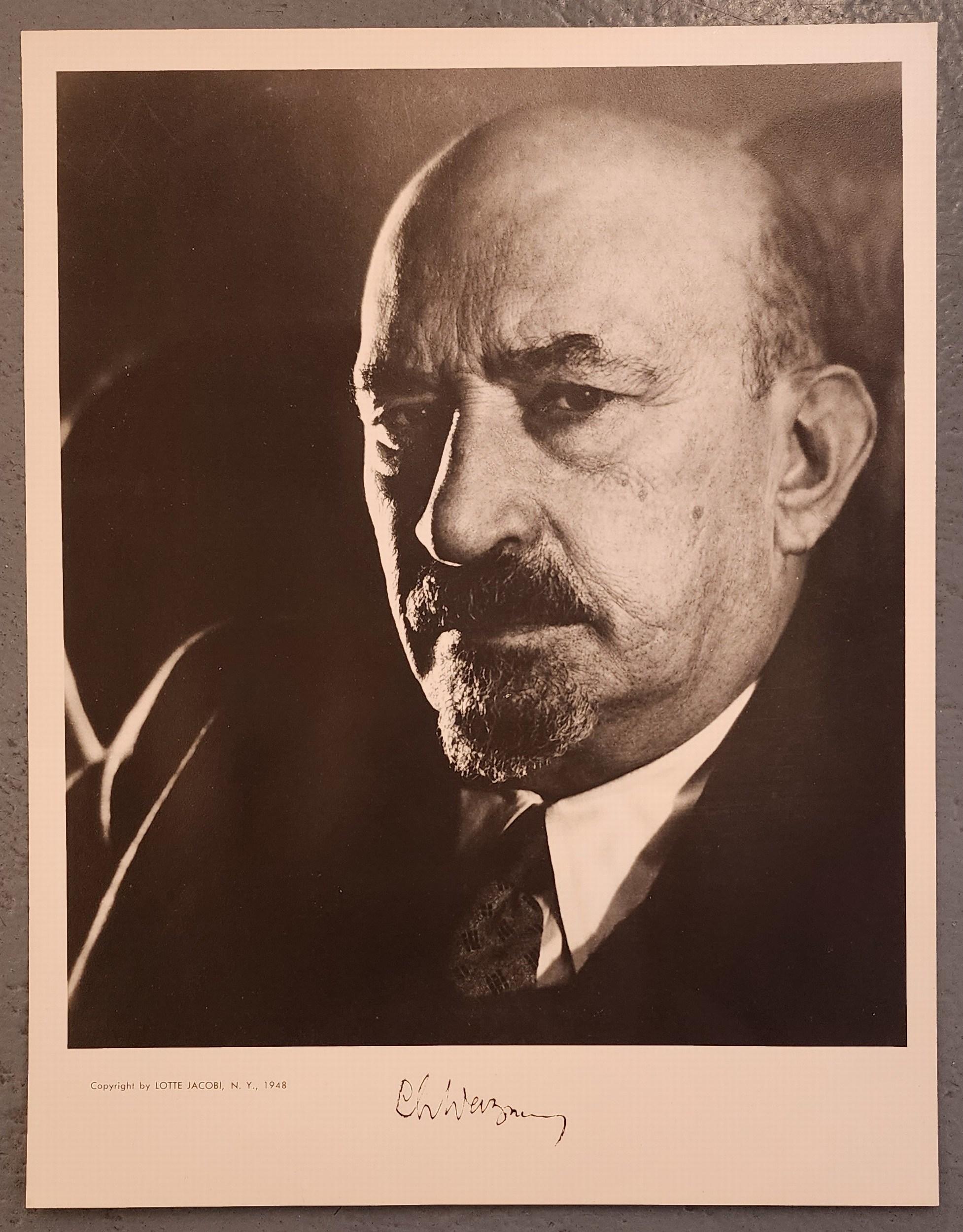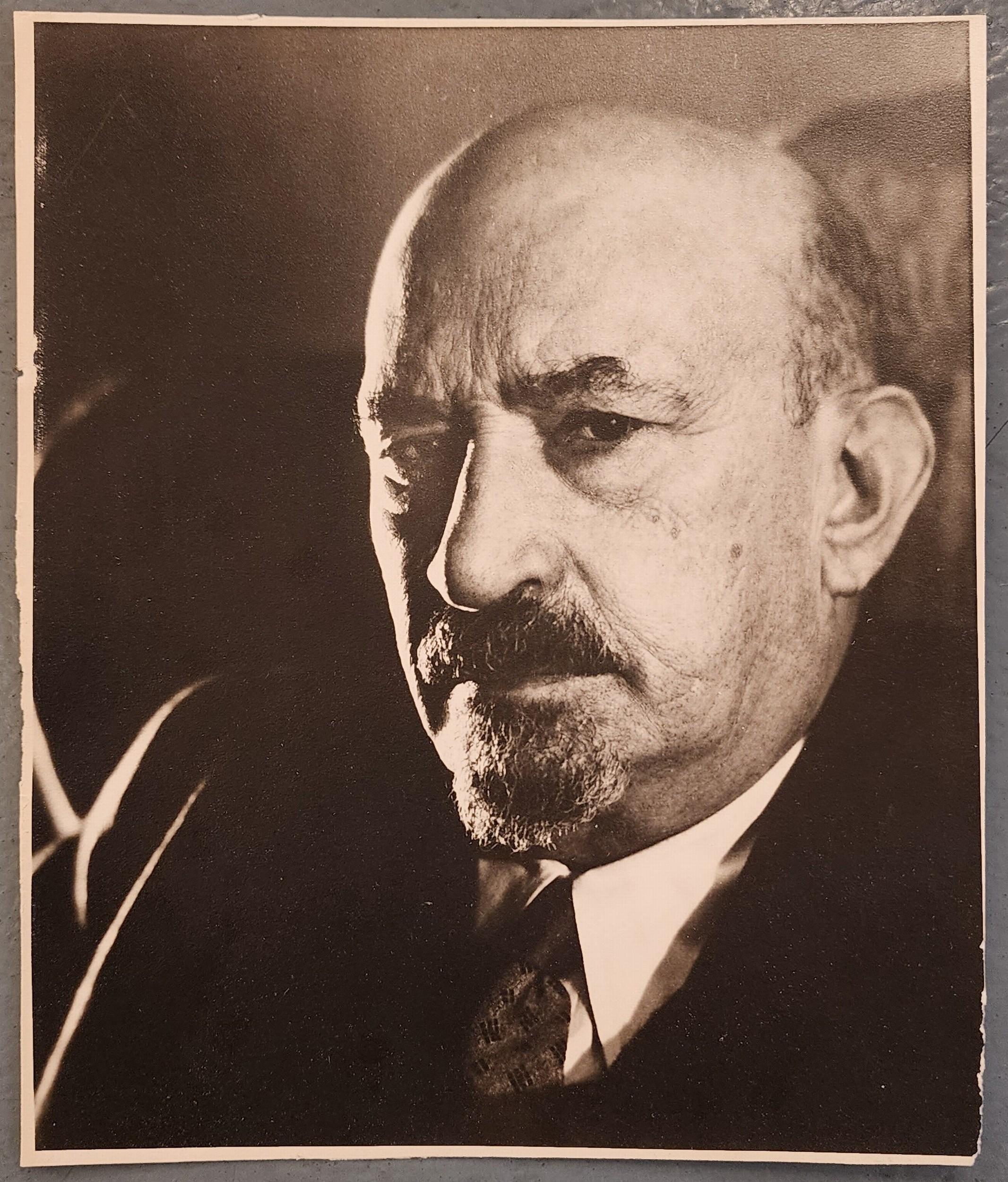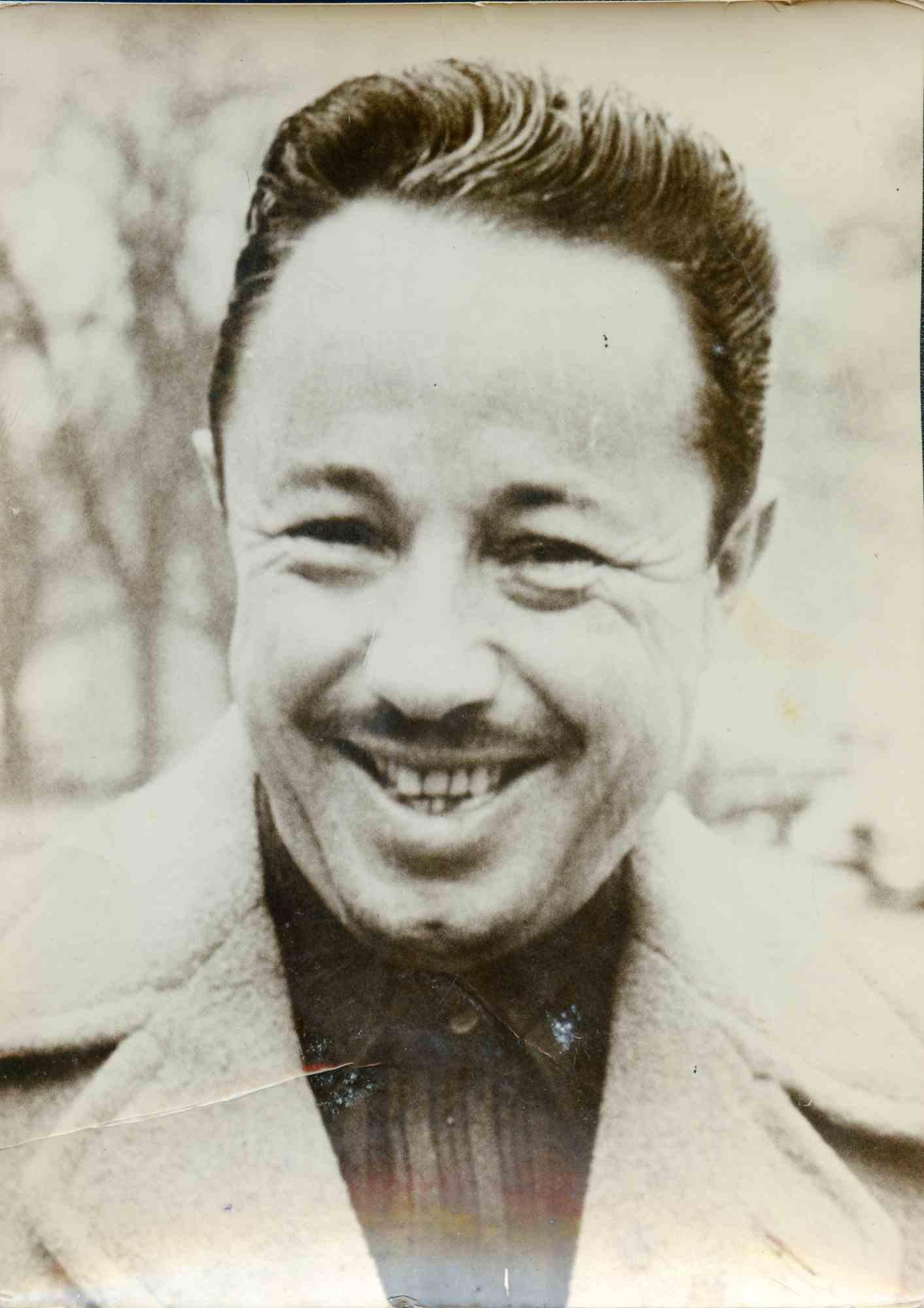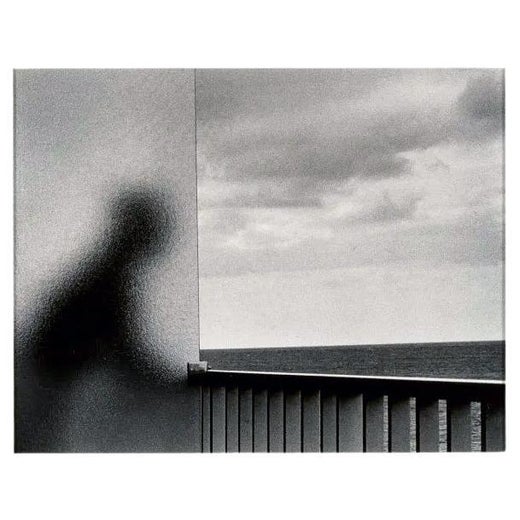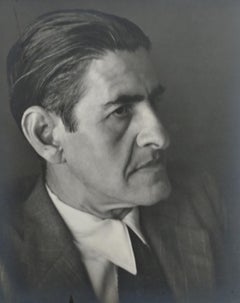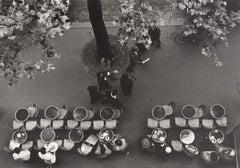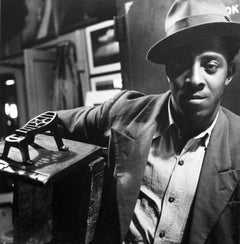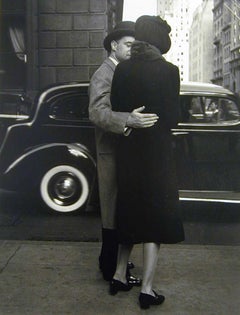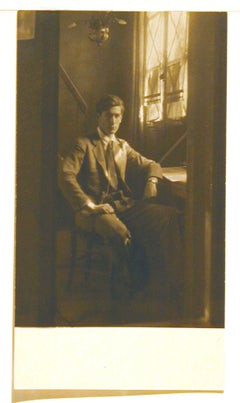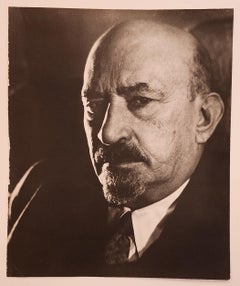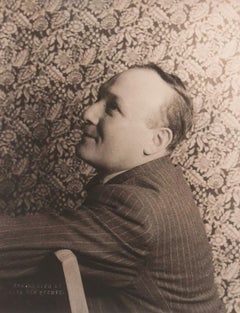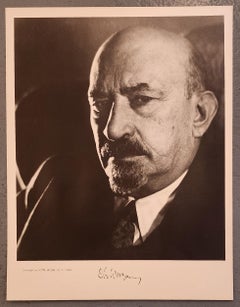Andre KerteszManuel Komroffc. 1930
c. 1930
About the Item
- Creator:Andre Kertesz (1894 - 1985, Hungarian)
- Creation Year:c. 1930
- Dimensions:Height: 3.5 in (8.89 cm)Width: 5.38 in (13.67 cm)Depth: 0.07 in (1.78 mm)
- Medium:
- Movement & Style:
- Period:
- Condition:
- Gallery Location:Denton, TX
- Reference Number:Seller: 95281stDibs: LU2159485702
Andre Kertesz
Known for capturing the essence of a moment, André Kertész was considered one of the most influential photographers of the 20th Century. He was born in Budapest, Hungary, on July 2, 1894. André Kertész’s pictures of everyday life greatly influenced magazine photography in the United States and Europe as his distinctive style showed generations of photographers how to shoot without intruding in the situation or the emotion of the day. After being severely injured during WWI, he returned to Budapest. Surprisingly, his post-war career initially continued as a clerk in the Budapest stock exchange. Kertész moved to Paris in 1925 to work as a freelance photographer. He soon made friends with some of the leading artists of the time, including Fernand Léger, Marc Chagall and Piet Mondrian. In 1928 he bought a Leica, a small handheld camera which gave him the freedom to move about the streets of Paris. The camera-enabled him to capture spontaneous moments of urban life, a subject that would fascinate him throughout his career. With his Leica and the friendship of these artists, he was able to develop a visual history of Paris. His work appeared in French, Italian and British publications, including prominent magazines and newspapers of the day like the London Sunday Times. At the onset of Hitler's Germany and the specter of war on the horizon, Kertész moved to New York City in 1936 to pursue his career as a photographer. He became a United States citizen in 1944. In 1949 he became a staple with Condé Nast. Alongside Alexander Liberman, Kertész helped to transform and elevate House and Garden magazine into the publication envisioned by Mr. Liberman. Once Kertész retired from commercial work in 1962, his work began to be recognized as Fine art photography. His projects harkened back to his early work in Hungary with street scenes, still-life and the movements of everyday people. Kertész's work is in numerous private and public collections including the Museum of Modern Art, The Art Institute of Chicago, J. Paul Getty Museum, Center for Creative Photography, Smithsonian Institution and Pompidou Center. As per Brassaï’s words, “André Kertész has two qualities that are essential for a great photographer, an insatiable curiosity about the world, about people and life and a precise sense of form." Kertész died in New York City, on September 27, 1985.
- ShippingRetrieving quote...Shipping from: Denton, TX
- Return Policy
More From This Seller
View AllEarly 20th Century Modern Portrait Photography
Silver Gelatin
1950s Modern Black and White Photography
Silver Gelatin
Early 20th Century Modern Black and White Photography
Silver Gelatin
1930s Modern Black and White Photography
Silver Gelatin
20th Century Modern Nude Photography
Silver Gelatin
1990s Contemporary Still-life Photography
Other Medium
You May Also Like
20th Century Black and White Photography
Silver Gelatin
1940s Modern Portrait Photography
Photographic Paper
1930s Other Art Style Portrait Photography
Silver Gelatin
1940s Modern Portrait Photography
Photographic Paper
1940s Modern Portrait Photography
Photographic Paper
1960s Modern Figurative Photography
Photographic Paper
Read More
Photographer to Know: Harold Edgerton
Edgerton captured motion like no other, yet he considered himself a scientist — not an artist.
These 9 Galleries Have Helped Turn the Lone Star State into a Thriving Art Hub
The Texas art scene is booming, thanks to trailblazing gallerists and their savvy collectors.
